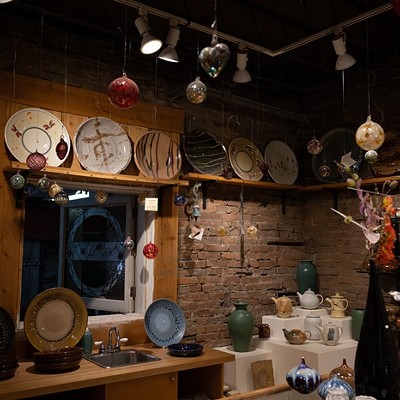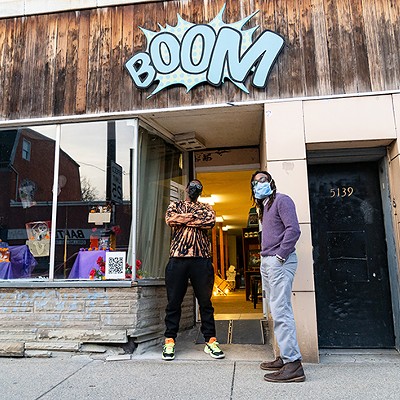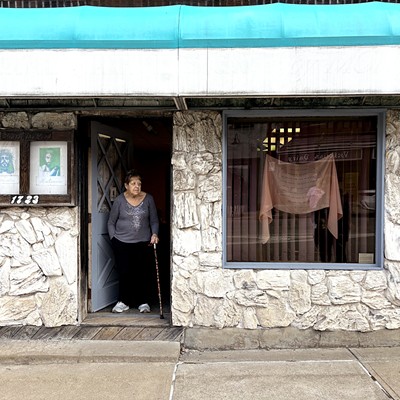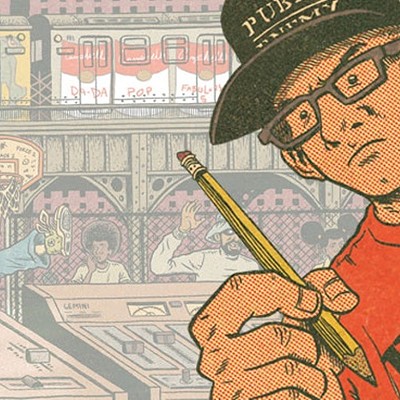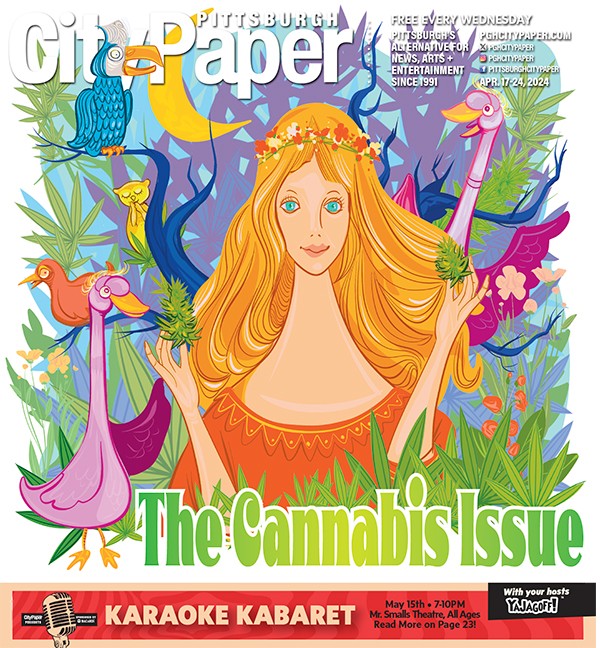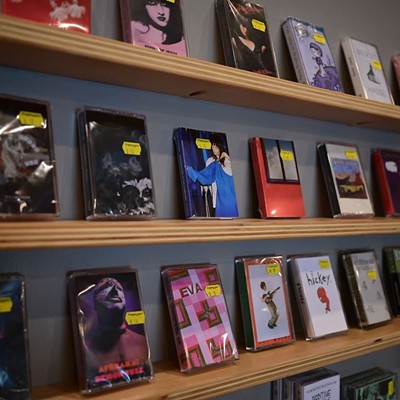With Christmas now approaching, the Butler-based artist is juggling deadline demands of restoring faith-based statues for area churches, institutions and private owners.
One smaller scale baby Jesus faces the light on Panei’s work desk as he explains to Pittsburgh City Paper how he arrived at this occupation.
Panei, 44, was an artist long before he turned his hand to celestial wares.
His signature works are chalk pastels on wood. You can’t walk into more than a half dozen shops in Panei’s hometown without seeing at least one. They’re generally big, bright abstracts with an aesthetic akin to stained glass.
Panei says a fellow local artist, photographer Dennis Keyes, happened to be a day job dentist in need of someone to craft quality dentures for clients. Keyes asked Panei to give it a try.
“Making dentures is kind of like sculpting,” Panei says, adding that it required a second round of education and Denture Technician certification.
Keyes says Panei’s integrity, generosity, and talent made the transition from canvas to dentistry seamless. “You have to have an idea of what a smile should look like. You have to set it up to make a person look beautiful and natural,” Keyes says. “Tom has an eye for that sort of thing.”
Keyes retired in 2016, and Panei now works mornings with Cranberry Dental Studios. With 18 years of making teeth under his belt, he says he commonly encounters people who smile broadly and give him a call out as the artist of their teeth.
About a decade ago, a dental client asked Panei if he could repair a sculpture they’d broken. Again, he said, “Why not?” Fabricating dentures and statue restoration use the same tools.
After that first repair, a line of statuary in-need followed through Panei’s studio door.
“There’s a need, and there’s not too many people who do this,” he says.
Panei has mended tiny chips, broken arms, and missing fingers. And he’s reconstructed more than one box full of 20-plus pieces and one Jesus who was hit by a car.
“Repairing statues is kind of fun. Each one is a learning experience because every one is so different,” he says. “Same with teeth.”
Finishing statue repairs to the perfect colors is the trickiest part, he says. He tries to be true to original, and sometimes that means replicating 100-year-old paint.
“I’ve used pastels my whole life, but I use oils on statues,” he says. “I’ve become better at it over the years.”
Today, Panei works hand-in-hand with A.T. Merhaut, Inc. Church Restoration & Supply, which regularly encounters statuary owners.
Panei has worked on statues all over the region and in multiple states. They’ve varied from tiny heirloom nativities to crucifixes so large he had to work inside the home church.
He’s repaired practically new, manufactured pieces as well as handcrafted legacy items bound with horse hair or straw.
It’s not just Jesus he repairs. Mary, the Stations of the Cross, St. Anthony and even an unnamed lady with a goose currently have seats around his studio.
It’s not uncommon for owners to bring him statues or figurines with no connection to religion. But he does feel a weighty sense of responsibility while working on the religious items.
“Some are 100 years old, and they will be displayed in churches another 100 years,” he says. “You want to make them as best as you can and keep them to their original appearance. It's challenging because you want it to match so well that no one knows it was repaired.”
Panei, a self-described “spiritual person,” admits that he gets “attached” to pieces.
There’s a church in Michigan, for example, that Panei occasionally visits to see the 30-foot Last Supper he restored.
“It is like part of the family. That was an emotional piece,” he says. “And not just because of the subject matter. Even if you are not religious, that’s an iconic piece.”
Holidays, especially Christmas and Easter, bring an uptick of projects. But, Panei says, there’s a flow of statue restoration needs year-round. He also is a musician. He has his teeth job. And he makes art on commission.
But he recently started yet another side sling - refreshing paint on tombstones. He tried it this summer, found a comfort in the calm intrinsic to cemeteries, and made plans to return when the seasons are favorable.
“Dentures and art and now tombstones,” he says. “I like stepping out of my comfort zone.”




